Anyone who has tried to enjoy a late evening drink in their garden will know that bugs and insects can present a real challenge to creating that relaxing environment. Lighting plays a huge part in creating the right atmosphere in our gardens but is this lighting responsible for the attraction of insects and bugs?
If you are questioning, do LED lights attract bugs and insects? do lights negatively affect the garden wildlife? and most importantly what can you do to prevent bugs and insects from being attracted to lights? you’ve come to the right place!
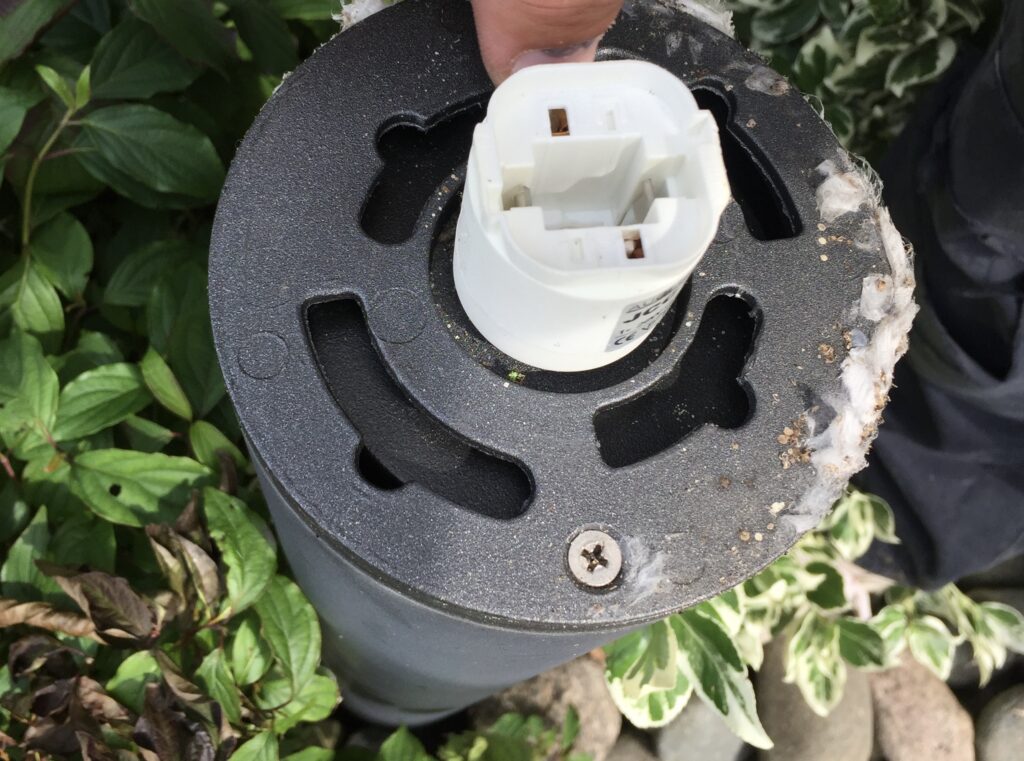
LED lights do attract bugs and insects because they emit wavelengths of light that are attractive to them. However, LEDs are less attractive to bugs than traditional incandescent light bulbs and can be made even less attractive with specific colours and placements.
So that’s the answer in a nutshell but continue reading to find out why bugs are attracted to light and the steps we can take to stop them from becoming a nuisance.
The Science Behind Bug and Insect Attraction to Light
Have you ever wondered why insects are attracted to light? The answer lies in their visual system, which is different from that of humans. Insects have photoreceptors that are sensitive to ultraviolet, blue, and green light, which are the wavelengths emitted by most artificial lights, including LED lights.
These photoreceptors are located in the insects’ compound eyes, which are made up of thousands of tiny lenses. When insects fly towards a light source, they are not actually flying towards the light itself, but towards the brighter areas around the light. This is because their compound eyes cannot focus on a single point of light.
Bugs and insects are attracted to light in the ultraviolet and blue spectrums. LED lights with a colour temperature of 5000K or higher may be more attractive to them. To put this into context, most white LED lighting is around 4000K (the K standing for Kelvin). When you see LED lights that are more orange in colour, or warmer colour as we would say, these usually sit around 3000K.

It seems that the whiter the LED light, the more insects and bugs will be drawn towards it. Alongside the colour temperature, the brightness of the light can also play a part in how many bugs and insects are attracted towards it.
All lighting has output measurements, measured in watts, that give us an indication as to how powerful the LED light is. Unsurprisingly, the higher the wattage, the more powerful and brighter the light emitted is going to be.
Brighter lights tend to attract more insects, as they are more visible from a distance. It stands to reason that more powerful or high-intensity LED lights can be more attractive to insects than lower-intensity lights that emit their light over a smaller distance.
Apart from the brightness and the colour temperature of the light, another factor that contributes to insect attraction to light is their circadian rhythm. Circadian rhythm is what animals and us humans use to know when it is time to be awake, and when it is time to sleep.
Many insects, including moths and flies, are nocturnal and are active during the night. They use the moon and stars to navigate. The artificial lights can disrupt their natural behaviour, confusing their internal clock and disrupting their feeding and mating patterns, which all contribute to them being drawn towards the LED lighting.
As well as the time of day, the time of the year will also have an impact on the amount of insect and bug activity around the lights. Bugs and insects are more active at certain times of the year, such as in the spring and summer months as there is more vegetation to enjoy.
This will come as no surprise to anyone who has tried to enjoy a bbq on a summer’s evening and been swarmed by insects attracted to the light and the food!
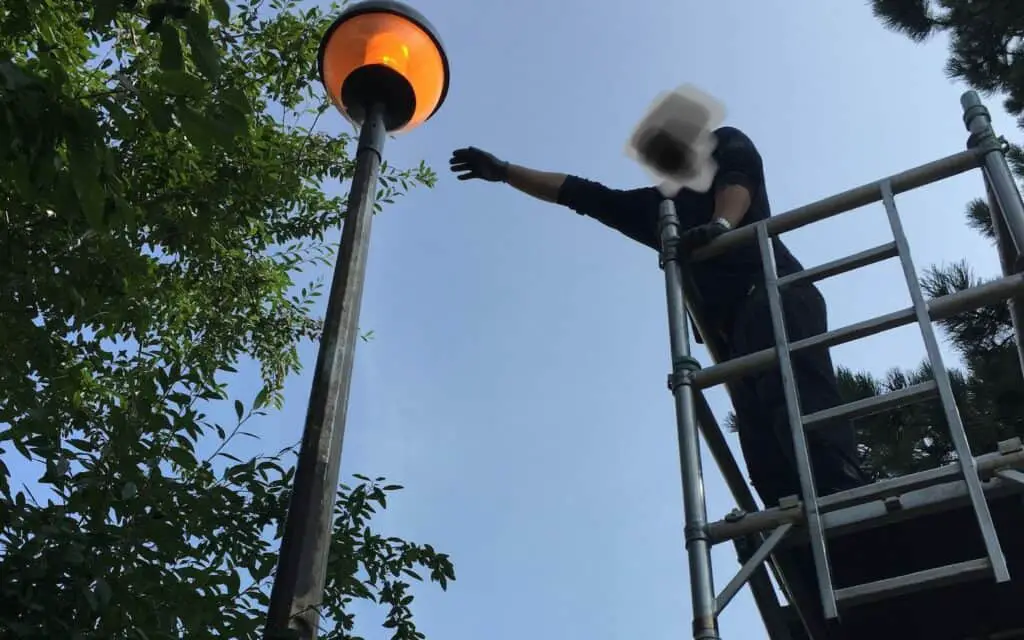
Whilst lots of insects and bugs are attracted to LED lights, it’s important to note that not all insects are. Some species, such as cockroaches and crickets, are actually repelled by light, when the lights get turned on these insects run for cover.
Are Bugs and Insects Attracted to LED Lights More than Traditional Incandescent Lights?
You may be wondering if we can get rid of our modern LED lights and revert back to old-fashioned incandescent light bulbs to solve the problem of bug attraction. Unfortunately, this is not the case and doing so would likely make the problem worse.
Studies have shown that LED lights do attract fewer insects than traditional lights. This is because LED lights emit less UV radiation which is important as insects are more sensitive to UV radiation than humans, and they use it to navigate and find food sources. Therefore, traditional lights that emit more UV radiation are more attractive to bugs and insects.
In addition to emitting UV light, incandescent bulbs also generate a lot of heat as a byproduct of the process of converting electricity into light. This higher heat generation, compared with LED lights, is another reason that incandescent lighting is more attractive to bugs and insects.
Insects are cold-blooded creatures, which means they rely on external sources of heat to regulate their body temperature. Heat-generating lighting creates a thermal plume, or column of warm air, which insects will follow and gravitate towards the heat source.
LED lights also have a different light spectrum than traditional lights, which can make them less attractive to certain insects. For example, LED lights emit less blue and green light, which are colours that are attractive to some insects such as mosquitoes and midges.
It’s worth noting that while the heat generated by incandescent lights can attract bugs and insects, it is not the only factor at play. As mentioned with the LED lighting above, the brightness and colour of the incandescent light will also influence insect behaviour and attraction.
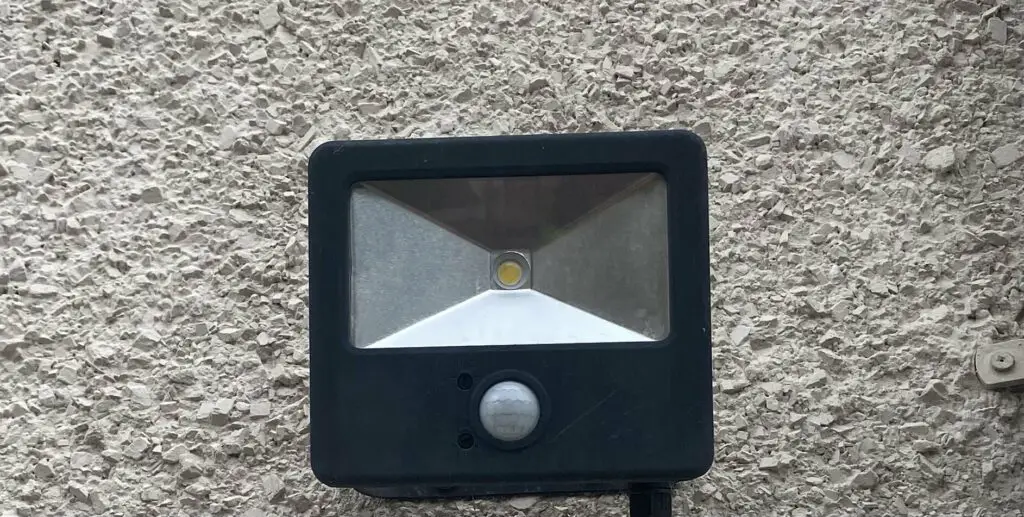
While LED lights may attract fewer insects than traditional lights, it is important to note that they still attract bugs and insects. Therefore, it is recommended to use the tips below to mitigate the impacts of the attraction on the enjoyment of your home and outdoor space.
Tips for Maintaining Bug-Free LED Lighting
So now that we know bugs and insects are attracted to LED lights we need to know how best to manage the situation. Below are a few key strategies for reducing the unwanted nightlife around our lights.
Position Your Lights Strategically
Position your LED lights away from areas where bugs are likely to congregate, such as standing water or dense vegetation. Lights that are placed near bushes or trees may also attract more insects than those that are placed in open areas.
Choose the Right Colour Temperature for Your Lights
LED lights that emit a warm white colour temperature (around 2700K) are less attractive to bugs than those that emit a cool white colour temperature (around 4000K to 5000K). Opting for warmer colours saves unwanted attraction and is also more beneficial to the insect’s navigation instincts.
For a while, local councils were all opting for bright white LED lighting in the street lights. It is now known that this was not the best choice and is in fact harmful to wildlife. Dark night regulations and guidance are helping us design better lighting systems factoring in the wildlife.
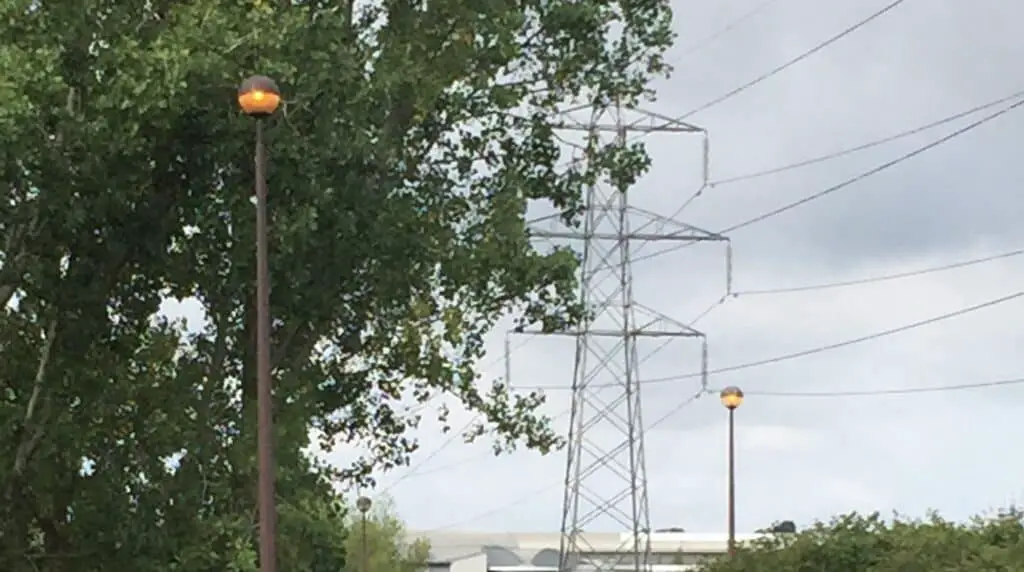
Install Bug-Proof Fixtures
If using the correct lighting outside it will be IP rated. This IP rating stands for ingress protection and is a measure of how well the light fitting prevents water and foreign objects from getting inside. The higher the IP rating the less likely bugs can get inside and become tempting food for other insects to be drawn towards.
Keep Your Lights Clean
Regularly cleaning your LED lights helps to remove any debris or dead bugs that may accumulate on them. This will help prevent the buildup of insect pheromones that can attract more bugs.
Limit the Duration of Light by Installing Motion Sensor Controls
It stands to reason that the longer the LED lights are on the more likely they are to attract a greater number of bugs and insects. Installing motion sensor-controlled lighting is a great way to reduce the amount of time the lights are on and also cut down on energy bills as an added bonus.
Choose Less Bright Light Fittings or Bulbs
The brighter the light the further the light is committed and the more bugs and insects it can attract. Choosing lower-wattage LED lighting ensures we are only lighting the areas that we need and not illuminating half the neighbourhood!
Use Bug Repellents Around the Lights
I’m not an advocate of harsh chemicals but consider using natural bug repellents like the ones listed below positioned near your LED lights to help keep bugs away.
Natural Remedies for Deterring Bugs from Your LED Lights
I feel like the days when everyone sprays chemicals around their garden, and to hell with the consequences are long gone. This can leave a tricky problem though of getting bugs and insects away from lighting without the use of these harsh chemicals. Fortunately, I have found a range of natural remedies that promise to do the trick. FYI – The links will direct to Amazon.
Citronella oil – Citronella oil is a natural insect repellent. Simply apply a few drops of citronella oil to a cloth or cotton ball and place it near your LED lights.
Essential oils – Essential oils like lavender, peppermint, and eucalyptus have insect-repellent properties. You can mix a few drops of essential oil with water in a spray bottle and mist the area around your LED lights. Doing this just before an evening enjoying the garden is a great idea.
Vinegar – Vinegar can be used as a natural insect repellent and is relatively inexpensive. Mix equal parts of cheap vinegar and water in a spray bottle and mist the area around your LED lights.
Garlic – It’s not just vampires who are repelled by garlic, it also acts as a natural insect repellent. Crush a few garlic cloves and place them near your LED lights. Be warned though that garlic is poisonous to cats and dogs so be very careful where you are placing it!
Herbs – Natural herbs like basil, lemongrass, and mint not only taste great when pluck straight from the garden and used in cooking but they also have insect-repellent properties. Plant these herbs near your LED lights to deter insects.
Cinnamon – Cinnamon is another cheap and readily available natural insect repellent. Sprinkle the cinnamon powder around your LED lights and it will help keep bugs away. Bear in mind though that unlike planting herbs nearby, the rain showers will wash away the cinnamon.
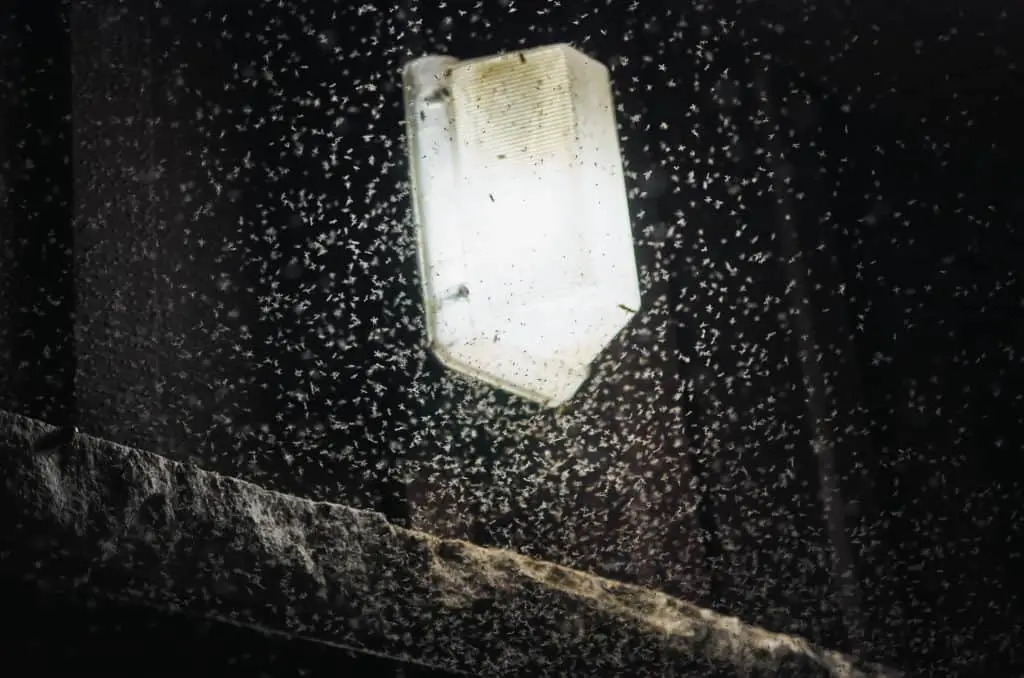
Experimenting with the above natural remedies should produce good results. Keeping bugs and insects away from LED lights that they are naturally attracted to is best done with a multipronged approach using natural remedies and the physical properties of the lights discussed earlier.
The Negative Impact of LED Light on Insects and Bugs
Whilst attracting bugs and insects to artificial light sources is not ideal for us humans when we are trying to enjoy our garden late in the evening, artificial light is also not great for the insects themselves. In fact, the negative impact of artificial light on insects and bugs can be significant.
- Disruption of Circadian Rhythms – Artificial light at night can disrupt the natural circadian rhythms of insects, which can affect their behaviour, reproduction, and overall health.
- Disorientation – LED lights can cause disorientation as nocturnal insects and bugs rely on the position of the moon, stars, and other natural light sources to navigate. Artificial light can interfere with these natural light sources causing confusion.
- Exhaustion – A consequence of the disorientation above is that insects can become exhausted which makes them more vulnerable to predators and other threats.
- Reduced Population – Over time, the impact of these negative effects of artificial light on insects and bugs can lead to a reduction in population size. This has a knock-on effect throughout the whole ecosystem and food webs.
We can see that the artificial light we emit from our homes and businesses can have serious negative effects on the local ecosystems and the environment as a whole. As lighting designers we are recognising these consequences more and putting procedures in place, such as specifying warmer led colours (2700K) for outdoor use, to minimise the impact of our artificial light emission.
The Impact of Bugs and Insects on Human and Animal Health
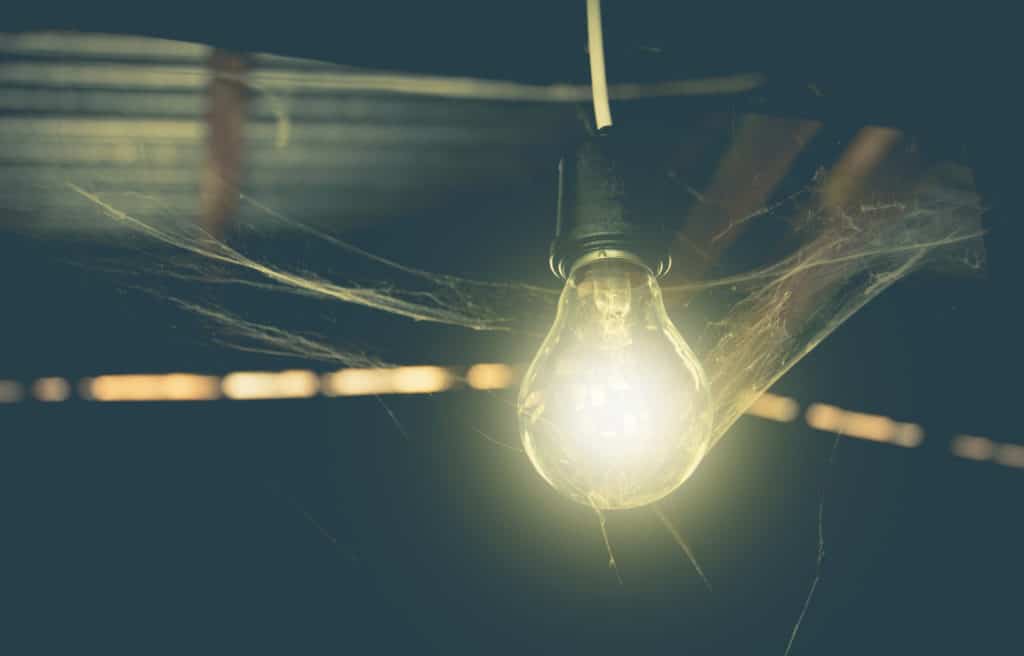
It’s not just the annoyance factor that should have us wary of having too many bugs and insects around our LED lights. Unwanted wildlife in large numbers can also have a negative effect on our health and that of our pets.
Some species of bugs and insects, like the ones below, can carry diseases or cause allergic reactions in certain individuals, so caution is needed if their numbers around your lighting are getting out of hand.
Mosquitoes
Mosquitoes can transmit diseases like the West Nile virus, dengue fever, and malaria. These diseases can cause symptoms like fever, headaches, muscle pain, and in severe cases, organ failure.
Mosquitoes can also transmit heartworm disease to dogs and cats, which can cause heart and lung damage and potentially be fatal if left untreated.
Ticks
Anyone with a dog or cat knows how inconvenient and potentially dangerous ticks and fleas our to our pets. Ticks can transmit Lyme disease, which can cause symptoms like fever, fatigue, joint pain, and in severe cases, heart and neurological issues.
Fleas can infest pets (and our homes!) and cause skin irritation, itching, and allergic reactions. They can also transmit diseases like flea-borne (murine) typhus.
Bees and Wasps
Getting stung by a bee or wasp is one of the most painful things that can happen in my opinion but it can also cause allergic reactions in some individuals, which can range from mild skin irritation to life-threatening anaphylaxis.
Overall, the risk of health issues from bugs and insects is generally low, but it is important to take precautions to minimize exposure to disease-carrying species and prevent allergic reactions. If are lighting is constantly attracting insects and bugs in large numbers we need to try and get it under control.
How to Protect Your Indoor LED Lights from Insects
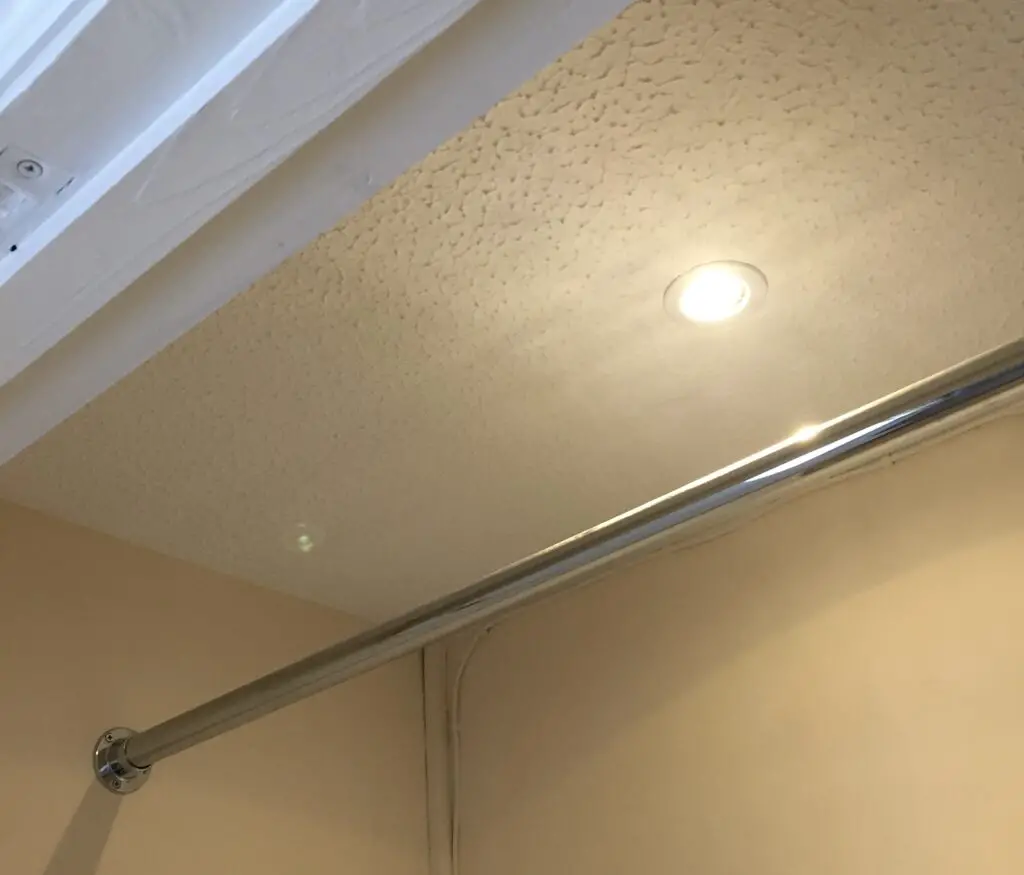
It’s not just when enjoying the great outdoors we need to worry about bugs and insects being attracted to our lights. We can also find our little friends making their way indoors. Many of the methods used to control insect attraction outdoors apply to indoor lights with a couple of extra additional measures we can take.
Seal any gaps or cracks around doors, windows, and other entry points to prevent insects from entering your home. If possible we can install screens on windows and doors – Amazon link to one with over 60,000 reviews – to prevent insects from entering while still allowing fresh air to circulate. We see this a lot in butcher shops and restaurant kitchen doors with the chain-mail or plastic sheeting hanging from the doors allowing cool air in but stopping the insects in their tracks. At least quite a few anyway.
We can also make sure we turn off lights when not in use. Turning off your LED lights when they are not in use can help reduce insect attraction especially if the lights are illuminated near open windows and doors. Installing motion sensor-controlled lighting indoors may be worth considering.
The Positive Effects of Light on Bugs and Insects
While artificial light at night can have serious negative impacts on insects and bugs, if used and designed correctly we can actually use lighting to our advantage as it can have a positive effect on certain areas of the ecosystem.
Certain insects, like ladybugs, lacewings, and hoverflies, are natural predators of plant pests like aphids and mites. We can use our outdoor lighting placed correctly to attract these predators to gardens, where they can help control pest populations.
Artificial lighting can also have a pollinating effect in our backyards. Many insects, including bees and moths, are important pollinators for plants and our artificial lights can attract these insects to our gardens or fields, where they can help pollinate flowers and crops.
Finally, it is worth remembering that all insect and bug attraction to our lights isn’t necessarily a bad thing. Insects like fireflies are often associated with summer nights and can add to the enjoyment of outdoor recreational activities like camping or hiking. Learning to live with and enjoy our outside spaces with the insects and bugs around us may be the simplest and best route forward.

